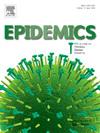使用历史匹配改进面向策略的基于代理的建模:一个案例研究
IF 2.4
3区 医学
Q2 INFECTIOUS DISEASES
引用次数: 0
摘要
计算能力和数据可用性的进步导致社会动态的机械数学模型越来越复杂。这些模型越来越多地用于为现实世界的政策决策提供信息,通常具有显著的时间敏感性。其中一种建模方法是基于代理的建模,它为捕获空间和行为现实性以及计算机实验(改变输入参数和假设以探索其对关键结果的下游影响)提供了特别的优势。为了在现实世界中发挥作用,这些模型必须能够定性或定量地捕捉到观察到的经验现象,形成后续实验的起点。最近的一个例子是COVID-19大流行,基于流行病学主体的模型为全球的政策和应对规划提供了信息。在整个过程中,建模团队经常不得不花费宝贵的时间和精力将他们的模型与数据对齐,也称为校准。由于许多基于智能体的模型是计算密集型的,校准过程限制了决策者在时间敏感的情况下可能探索的问题和场景。在本文中,我们结合历史匹配、异方差高斯过程建模和近似贝叶斯计算来解决这一瓶颈,大大提高了效率,从而扩大了政策模型的实用范围。我们通过一个案例研究来说明我们的方法,该案例研究使用了先前发表并广泛使用的流行病学模型Covasim模型。本文章由计算机程序翻译,如有差异,请以英文原文为准。
Improving policy-oriented agent-based modeling with history matching: A case study
Advances in computing power and data availability have led to growing sophistication in mechanistic mathematical models of social dynamics. Increasingly these models are used to inform real-world policy decision-making, often with significant time sensitivity. One such modeling approach is agent-based modeling, which offers particular strengths for capturing spatial and behavioral realism, and for in-silico experiments (varying input parameters and assumptions to explore their downstream impact on key outcomes). To be useful in the real-world, these models must be able to qualitatively or quantitatively capture observed empirical phenomena, forming the starting point for subsequent experimentation. One recent example is the COVID-19 pandemic, where epidemiological agent-based models informed policy and response planning worldwide. Throughout, modeling teams often had to spend valuable time and effort aligning their models to data, also known as calibration. Since many agent-based models are computationally intensive, the calibration process constrains the questions and scenarios policymakers may explore in time-sensitive situations. In this paper, we combine history matching, heteroskedastic Gaussian process modeling, and approximate Bayesian computation to address this bottleneck, substantially increasing efficiency and thus widening the range of utility for policy models. We illustrate our approach with a case study using a previously published and widely used epidemiological model, the Covasim model.
求助全文
通过发布文献求助,成功后即可免费获取论文全文。
去求助
来源期刊

Epidemics
INFECTIOUS DISEASES-
CiteScore
6.00
自引率
7.90%
发文量
92
审稿时长
140 days
期刊介绍:
Epidemics publishes papers on infectious disease dynamics in the broadest sense. Its scope covers both within-host dynamics of infectious agents and dynamics at the population level, particularly the interaction between the two. Areas of emphasis include: spread, transmission, persistence, implications and population dynamics of infectious diseases; population and public health as well as policy aspects of control and prevention; dynamics at the individual level; interaction with the environment, ecology and evolution of infectious diseases, as well as population genetics of infectious agents.
 求助内容:
求助内容: 应助结果提醒方式:
应助结果提醒方式:


